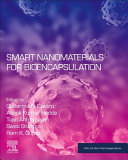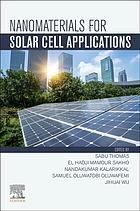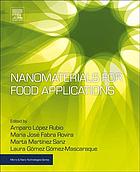Smart Nanomaterials for Bioencapsulation 1st edition by Guillermo Castro, Ashok Nadda, Tuan Nguyen, Swati Sharma, Ram Gupta 0323913970 9780323913973
$50.00 Original price was: $50.00.$25.00Current price is: $25.00.
Smart Nanomaterials for Bioencapsulation 1st edition by Guillermo R. Castro, Ashok Nadda, Tuan Nguyen, Swati Sharma, Ram Gupta – Ebook PDF Instant Download/DeliveryISBN: 0323913970, 9780323913973
Full download Smart Nanomaterials for Bioencapsulation 1st edition after payment.

Product details:
ISBN-10 : 0323913970
ISBN-13 : 9780323913973
Author : Guillermo R. Castro, Ashok Nadda, Tuan Nguyen, Swati Sharma, Ram Gupta
Smart Nanomaterials for Bioencapsulation focuses on the fundamentals, synthesis methods and matrix design for the encapsulation of drugs, drug release, food and nutraceuticals, mechanisms of nano- encapsulated drugs on liposomes, micelles, silica composites, carbon nanotubes, dendrimers, and protein inorganic nanohybrids. Providing detailed information on the encapsulation of food and drug derivatives, the book helps create new and modern approaches for both pharmaceutical and nutritional science. The target delivery of pharmacological agents, as well as food additives under various conditions is covered, including sections on systemic release of drug molecules, minimum loss at non-target sites, the accumulation of diseased tissue or organs, and more.
Smart Nanomaterials for Bioencapsulation 1st Table of contents:
Chapter 1 Hybrid systems in bio-encapsulation
1.1 Introduction
1.2 Crystalline calcium carbonate
1.3 Synthesis of CaCO3 particles
1.4 Characterization of crystalline calcium carbonate
1.5 Cytocompatibility of CaCO3 particles
1.6 CaCO3 particles as drug carriers
1.7 Conclusion
Declaration of competing interest
Acknowledgements
References
Chapter 2 Polysaccharides as natural nanoencapsulants for controlled release of compounds
2.1 Introduction
2.2 Structure, properties, and health benefits of natural polysaccharide
2.3 Development of smart polysaccharide-based delivery systems of bioactive compounds
2.4 Interactions between biopolymers for nanoencapsulation
2.5 Polysaccharide-based nanocompounds as potential delivery systems for bioactive compounds: applications and future perspectives
2.6 Conclusion and further remarks
References
Chapter 3 Application in gene therapy and DNA/RNA vaccines
3.1 Introduction
3.2 Gene therapy: principles and strategies for DNA/RNA editing approaches
3.3 DNA and RNA vaccines: general concepts, mechanisms of action and their advantages and limitations
3.4 DNA/RNA delivery methods: viral versus nonviral vectors
3.5 Nanomedicines as vaccine adjuvants
3.6 Current status of nanomedicines for gene therapy and DNA/RNA vaccines: preclinical and clinical studies
3.7 Conclusions
References
Chapter 4 Delivery of bioencapsulated proteins
4.1 Introduction
4.2 Protein bioencapsulation development
4.3 Challenges in protein and peptides bioencapsulation
4.4 Nanomaterials and strategies for protein nanoencapsulation
4.5 Conclusion
Acknowledgment
References
Chapter 5 Smart bio-encapsulation for immunotherapy
5.1 Introduction (Immunotherapy)
5.2 Immunotherapy strategies
5.3 Checkpoint inhibitors
5.4 Cytokine
5.5 Vaccines
5.6 Immune cell therapy
5.7 Smart nanocarriers for immunotherapy
5.8 Conclusion
References
Chapter 6 Bioencapsulation for protein delivery
6.1 Introduction
6.2 The characteristics of proteins for bioencapsulation
6.3 Coating components in bioencapsulation
6.4 Methods of bioencapsulation
6.5 Bioencapsulation using smart polymers
6.6 Bioencapsulation by nanoparticle and microparticle system for protein delivery
6.7 Advantages of bioencapsulating proteins
6.8 Challenges in bioencapsulation of proteins
6.9 Future prospects and conclusion
Acknowledgment
References
Chapter 7 Bioencapsulation for probiotics
7.1 Introduction to probiotics
7.2 Bioencapsulation of probiotics
7.3 Characterization and properties of encapsulated probiotics
7.4 Issues and challenges in the bioencapsulation for probiotics
7.5 Future of the bioencapsulation for probiotics
References
Chapter 8 Bioencapsulation for the functional foods and nutraceuticals
8.1 Food additives
8.2 Bioencapsulation for food additives
8.3 Characterization and properties of encapsulated food additive
8.4 Issues in the bioencapsulation for food additive
8.5 Future and challenges of the bioencapsulation for food additives
References
Chapter 9 Bioencapsulation of proteins in therapeutics
9.1 Introduction
9.2 Characteristics of therapeutic proteins
9.3 Therapeutic proteins of biotechnological origin
9.4 Strategies for modeling the pharmacokinetic and pharmacodynamic characteristics of therapeutic proteins
9.5 Methods and materials for encapsulation of therapeutic proteins
9.6 Conclusions and future prospects
References
Chapter 10 Bioencapsulation for food additives
10.1 Introduction
10.2 Encapsulation processes
10.3 Coating materials
10.4 Characterization of encapsulated materials
10.5 Encapsulation applications in food industry
10.6 Encapsulation of lactic acid bacteria and probiotics
10.7 The use of encapsulation technology for inhibition of pathogens
10.8 The use of encapsulatıon technology for the prevention of fish oil oxidation
10.9 The use of encapsulation technology to improve the quality of meat products
10.10 Results and future suggestions
References
Chapter 11 Theragnostic applications
11.1 Introduction
11.2 Evolution of theragnosis
11.3 In vivo imaging modalities
11.4 Treatment strategies
11.5 Nanotheragnostics
11.6 Nanomaterials with theragnostic applications
11.7 Radionuclides associated with nanocarriers
11.8 Metallic nanoparticles
11.9 Future of clinical studies
References
Chapter 12 Nanotechnology in agriculture and bioencapsulation of probiotics/food additives
12.1 Introduction
12.2 Application of nanotechnology in agriculture
12.3 Bioencapsulation for probiotics and food additives
12.4 Conclusion
Acknowledgement
References
Chapter 13 Smart systems in bio-encapsulation for cancer therapy
13.1 Introduction
13.2 Smart nanocarrier-based delivery systems
13.3 The tumor microenvironment as the target site for smart systems
13.4 Conclusion and perspectives
References
Chapter 14 Nanoencapsulation for production of fermented foods and pigments
14.1 Introduction
14.2 Nanoencapsulation methods
14.3 Strategies for the production of nanoparticles
14.4 Methods for removal of solvent
14.5 Materials used to produce nanomaterials
14.6 Applications
14.7 Future perspectives
14.8 Conclusion
References
Chapter 15 Nanoencapsulation of tyrosine kinase inhibitors for oncological therapeutics
15.1 Introduction to the lung cancer
15.2 Epidermal growth factor receptor (EGFR) gene and mutation in lung cancer
15.3 Cancer management by TKIs
15.4 Targeted cancer and lung cancer therapies
15.5 Nanoencapsulation of TKIs for lung cancer treatment
15.6 Limitations of nanoencapsulations/nanoparticles/nanomedicines in cancer treatment
References
Chapter 16 Nanoencapsulation for chemical intermediate, biocides, and bio-based binder
16.1 Introduction
16.2 Material used in nanoencapsulation
16.3 Techniques for encapsulation
16.4 Nanoencapsulation for chemical intermediates
16.5 Nanoencapsulation for biocides
16.6 Nanoencapsulation for bio based binder
16.7 Future perspectives
16.8 Conclusion
People also search for Smart Nanomaterials for Bioencapsulation 1st:
smart nanomaterials technology
smart nanomaterials for infectious diseases
smart nanomaterials for biomedical applications a review
smart nanomaterials for cancer diagnosis and treatment
applied nanomaterials and smart polymers
Tags: Smart Nanomaterials, Bioencapsulation, Guillermo Castro, Ashok Nadda, Tuan Nguyen, Swati Sharma, Ram Gupta
You may also like…
Technique - Energy: Renewable Energy
Technique - Nanotechnology
Nanomaterials for Biocatalysis 1st edition by Guillermo Castro 0128244371 9780128244371
Engineering
Business & Economics - Management & Leadership
Technique - Energy
Smart Grids for Smart Cities Volume 2 1st Edition O. V. Gnana Swathika
Uncategorized
Business & Economics Business & Economics - Management & Leadership
Business & Economics - Management & Leadership
Solving for Project Risk Management 1st edition by Christian Smart 1260473841 9781260473841












